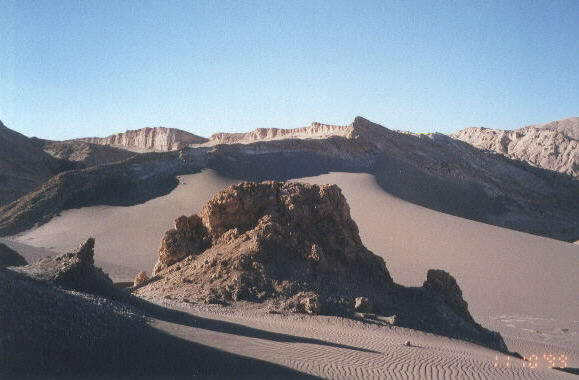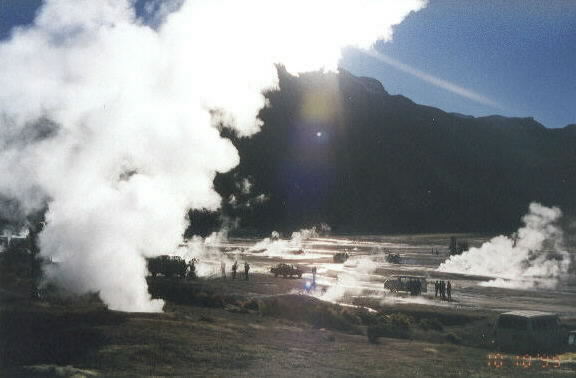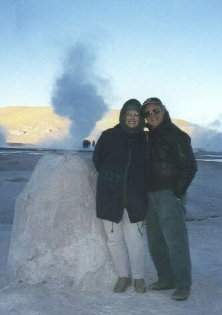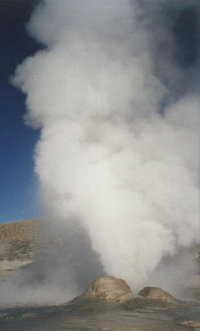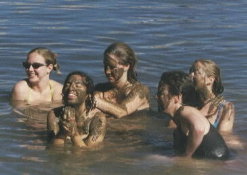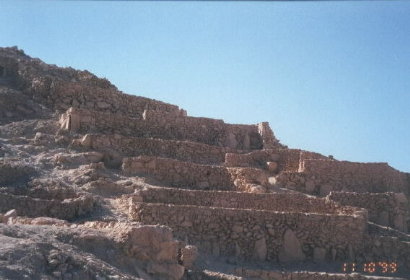It is one of Chile's highlights, with its splendid geologic formations, interesting fauna, archeological sites, and the nearby geyser fields and picturesque oasis pueblos.
The temperatures can reach highs of 79 degrees Farenheit and a low of 39 degrees in the summer. At higher elevations, such as at El Tatio Geyser field, even in the summer, the temperature can get as low as 8.6 degrees and only get as high as 50! This is why we took along our winter coats and gloves.
The Salar lies over an underground lake, but there are a few places where there is water on the surface. These small ponds in the surface of the rugged salt crust are the breeding grounds for several varieties of waterfowl, most notably the Chilean and Andean flamingo.
Columbus Holiday Weekend, 1999
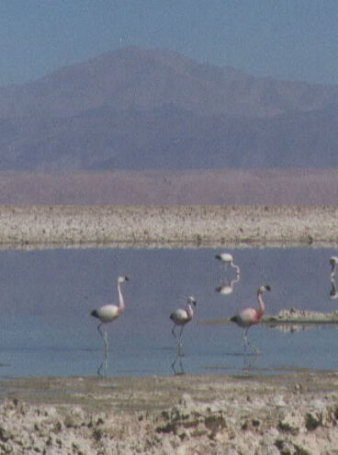
Pond at Los Flamencos National Reserve,
located 35 miles south of San Pedro de Atacama.
